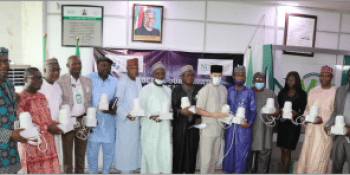How well do climate services work for farmers?

By Alexa Jay
We know that smallholder farmers in the developing world are particularly vulnerable to the impacts of climate fluctuations and weather extremes. In the face of a more uncertain climate, effective climate information and advisory services have great potential to help farmers make decisions regarding their farms. Climate information also offer potential to improve the management of climate-related risk within an agricultural context and help farmers adapt to change.
Climate services for agriculture and other sectors are receiving increasing attention globally. As a sponsoring partner of the Climate Services Partnership (CSP), our research theme Adapting through managing climate risk is playing a key role in making climate information services work better for smallholder farmers.
When it comes to efforts to upscale climate services for farmers, an ability to evaluate how programs impact livelihoods is critically important. Therefore, the theme researchers and partners have conducted assessments of agrometeorological advisory programs in Mali and India, capturing lessons about factors leading to success that can be transferred to other countries and regions. CSP convened a group of researchers and practitioners in mid-March at the International Research Institute for Climate and Society (IRI) to develop initial guidelines for measuring success in climate services programs.
Through two days of discussion, participants developed draft guidelines for climate services evaluations that assess key program elements, including characteristics of the climate information that the service is based on; tailoring of information to different decision-making contexts; information dissemination; and governance, process and structure of the service.
The group emphasized that successful climate services must have a foundation of high quality data, but good data alone isn’t enough. Sustained dialogue between information providers and end users is needed to understand the decision-making context and how climate information can help reduce risk and make new opportunities available.
This interaction is supported by the institutional structure of the service and enables providers to better structure information to meet user needs. The new evaluation guidelines provide a framework for measuring each of these essential program capabilities, promoting better understanding of how users can benefit from climate services.
These guidelines will be tested by members of the CSP and their grantees in the coming months, and assessed at the Third International Conference on Climate Services in Jamaica in December. This framework will also feed into a CCAFS effort, in collaboration with USAID, ICRISAT, and a number of CGIAR centers, to develop a gender-responsive monitoring and evaluation methodology to evaluate the usefulness of climate information and advisory services for farming communities.
View a presentation by Theme Leader James Hansen: CCAFS Strategy for Climate Services
A community-based expert roundtable will meet in May in Kaffrine, Senegal, to develop the tool, which will be tested through surveys with farmer communities in the area that have participated in CCAFS-supported climate services pilot projects. Kaffrine is also a CCAFS benchmark site, allowing the impact of climate information services to be measured using baseline data.
By harnessing expertise from researchers, practitioners, and communities, these efforts advance our ability to understand how climate services improve the livelihoods of farming communities, building towards a collaborative process of risk management in an uncertain climate.
Alexa Jay is a Senior Research Staff Assistant working on Theme 2: Adapting through managing climate risk. You can learn more about managing risks under a variable climate, by following us on Twitter and Facebook.


